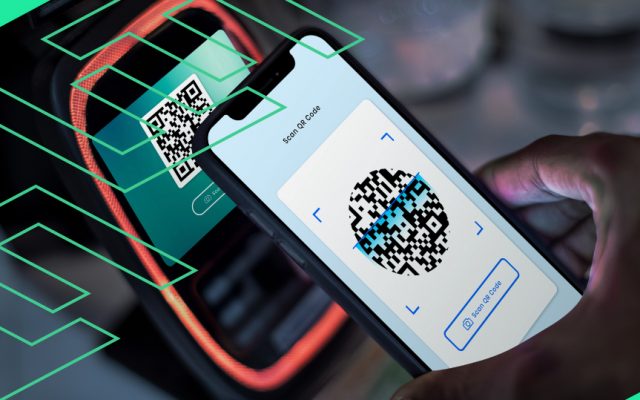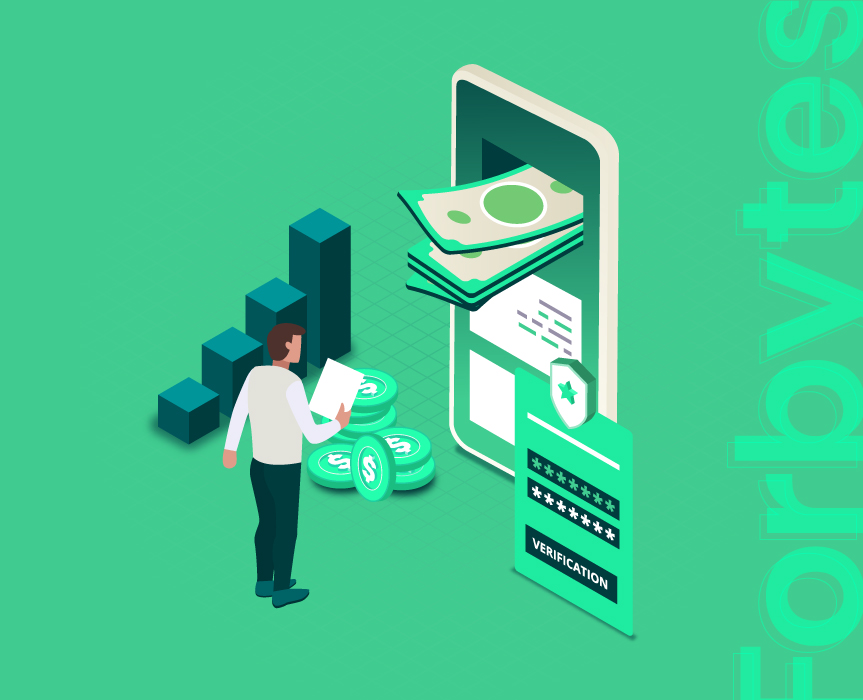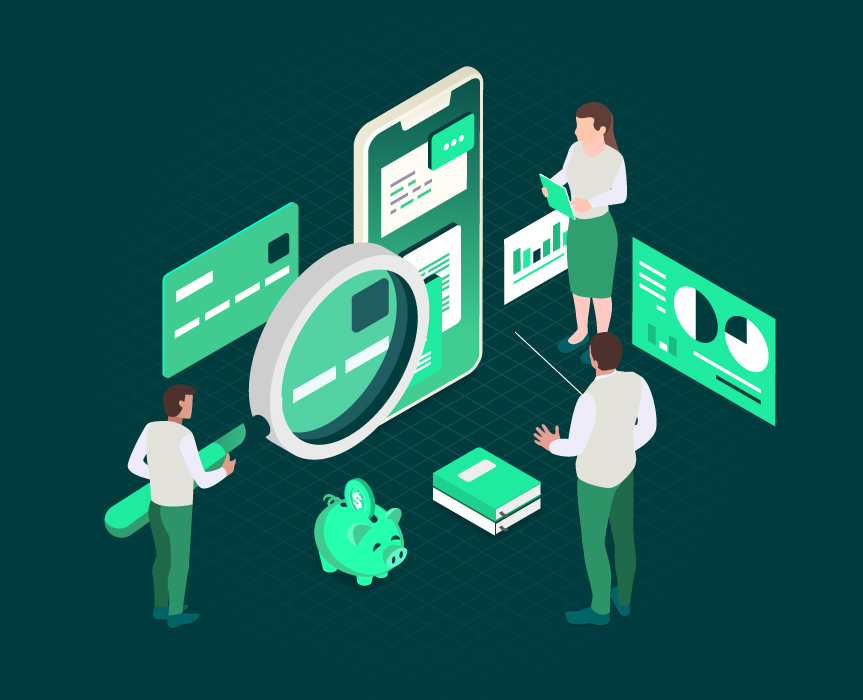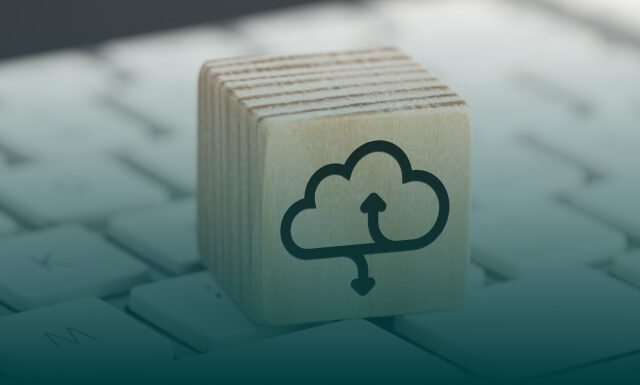Mobile banking has become a part of people’s new lifestyle. Nowadays, people get used to performing all banking operations simply via mobile banking applications. According to Juniper Research, 32% of the Global Adult Population use their mobile devices daily to manage finances.
Mobile banking users exceeded 1.75 billion by 2019. There is no reason to go to the nearest bank and wait in line for the opening deposit or check your finances. Since digitalization is boosting the banking industry, traditional institutions have to create another communication channel with retail clients and engage with them better. Moreover, mobile banking provides a separate software accessible on personal cell devices compared to Internet banking, where users can log into a personal account via a corporate banking website.
Read further to learn about the market trends, banking core features, challenges, and tips on mobile banking development.
Market Overview & Trends
Statistics show how much people value the flexibility of mobile apps: 91% of users prefer apps to websites, and 68% of Millennials believe their smartphone can replace their real wallets. What makes mobile banking apps solid is a high level of cybersecurity, risk-free functionality, and access to customer service 24 hours a day. People believe mobile-first strategies will soon become a necessity rather than just a trend.
31% of people use their m-banking apps the most, 55% use social media apps, and 33% weather apps. This proves that most applications appearing on the market need to fight hard to conquer user attention.
What trends will mobile banking apps follow in 2022?
- Biometric authentication
It is aimed to ensure the security of your financial data and account balance via fingerprint scanning and facial recognition.
- Cardless ATM withdrawals
This feature allows transferring, getting, or conducting money operations without having a physical debit card.
- Artificial Intelligence
The adoption of AI and ML algorithms in mobile apps is one of the most recent advancements in mobile banking to predict customer behavior, optimize customer support, or personalize services. Many large, world-renowned banks use AI-powered bots to fulfill various tasks with their customers. For example, to provide fast replies to customers’ frequently asked questions. Automating customer services via virtual assistants can help businesses reduce costs by up to 30%.
- Voice payments/voice recognition
This technology allows making transactions by voice. For example, after the voice assistant verifies your identity, you can transfer money or pay for utilities. In 2021, 24% of people used voice-enabled P2P payments. The numbers are anticipated to grow, reaching 31% by the end of 2022. No wonder — voice payments are quick, easy, and effortless.
- Blockchain
It is a decentralized system that stores information in a way it impossible to change, hack, or delete data. Since all records are encrypted, blockchain technology offers robust security, which is beneficial for mobile banking app development. As all the transactions are recorded on the public ledger, the possibility of fraudulent transactions is significantly eliminated. Therefore, the adoption of this technology by digital banks opens new opportunities, ensuring transparency and high security. The latter, in turn, is the foremost concern of financial operations.
- Edutainment
Mobile applications have to educate customers about various problems and make them financially literate. What if chatbots, for example, could educate their customers as well as entertain them to make this process more accessible? For instance, PayPal and American Express teach their bots to provide edutainment to their customers to resolve their financial issues.
Due to the COVID-19 pandemic, the market growth for mobile banking apps has accelerated, pushing the demand for contactless payment, online shopping, real-time account information, etc. This has led to the elimination of paperwork at banks.
Let’s check out the current market tendencies, customers’ demands, what the best banking apps currently exist on the market, and what makes them stand out from the crowd.
What Are the Benefits of Mobile Banking Apps?
Banking apps aim to manage and take control of users’ planning and expenditures. With BaaS services and banking apps, users can efficiently manage their accounts, save up, and optimize their financial operations. Moreover, with mobile banking apps, businesses can create unique experiences via personalization. The advantages of mobile banking development for users are as follows:
- Money transfer is simple.
- Financial activities are accessible at any time, round-the-clock.
- Transaction history and details may be reviewed quickly and easily.
- Security is the foundation of mobile banking.
- You can easily deposit or repay loans online.
- You can pay your bills with a click.
As for financial institutions, with mobile banking apps, they can gain the following benefits:
- Decreased operating costs
There are no more physical branches; employees can work for the company remotely, which eliminates expenditures. Also, virtual assistants, like chatbots, can easily substitute sales representatives to automate their workflows. This, in turn, improves the ability to provide immediate responses and reduces spending on wages.
- Diversity of services and functions
In the world of digitalization, you don’t have any restrictions. You can create, develop, improve, and engage better with your customers than in physical banks. There is a huge competition between mobile banks; therefore, businesses try to offer their customers as much better service as they can.
- Push notifications as a way to retain users
The notifications are a new method of communication with users. With targeted push notifications, you can inform customers of new offers and discounts, provide transactional updates, investment tips, guidance, and support. Push notifications are a great instrument to foster customer relationships.
- Advanced data analytics
Continual data gathering can provide tremendous results. Applying advanced data analytics in customer support, sales, and marketing can help make personalized product offers that appeal to customers individually at specific times. Furthermore, with intelligent data management and analytics, businesses are empowered with valuable insights into customers’ problems and needs that can be further resolved in a more accurate and speedy way.
- Improved customer service
Banks paying special attention to client services are more likely to boost their revenue and increase customer loyalty. In the case of any concerns or issues, users of your app can easily connect with the support team or live chat and get exceptional customer assistance at any time.
- Great ROI
Mobile banking allows businesses to minimize customer fees, fully understand customers’ needs, provide flexibility and mobility, and offer personalized experiences, which are guarantees of achieving significant return on investment (as high as 300% as per the Accenture study).
What Are the Main Features of Mobile Banking Apps?
- Check deposits. A mobile check deposit saves your time because you can do it remotely, regardless of where you are and what time it is. You have to take a picture of the check and deposit it on your mobile banking app.
- Authentication and authorization. Multifactor authentication is a safe method of logging into the app. It works by verifying a person and confirming identity. User biometric authentication includes such parameters as fingerprints, appearance, voice, and gestures.
- Up-to-date account activity. The most fundamental feature you can offer is tracking users’ financial states. It includes such details as date, description and amount, pending, balance, and search.
- Account-to-account, person-to-person, and bank-to-bank transfer. With a P2P transfer, you can send money quickly and easily to friends and family straight from your phone. In addition, you can transfer funds between your external accounts via a bank-to-bank transfer.
- Integration with IoT-based wearables. With smart IoT systems, digital banks can ensure contactless NFC payments via wearables. For example, European banks such as Bankwest (Australia) and ABN AMRO (the Netherlands) adopt IoT technology in the form of smart bracelets, rings, or watches. Via mobile apps using Face ID or fingerprints, users get enhanced cybersecurity.
Mobile Banking Development Challenges
The most significant issues in mobile app development are security, user privacy protection, and difficulties with verifying concerns. This is something that developers must greatly consider. You have to make your app user-friendly and keep users’ private information and money secure.
Moreover, you should think in advance about whether your application adheres to all security guidelines and complies with regulations. If not, you must comply with local rules or the state rules for your region or country. In a nutshell, we can outline the following challenges while developing mobile applications:
- compliance with regulations
- meeting security standards
- user data protection
- incorporation of proper features
- improper platform usage
Developers’ contribution to building a mobile app is a significant part of the product’s success. They ensure your app is safe and secure by encrypting all data with advanced technologies. Here are some things that you can do to make your software more cyber-resistant:
- Ensure two-factor authentication
The main way to protect your mobile banking app security is by using 2FA. It is realized by adding a key to your password. Usually, it works by sending a letter to your email or checking the ownership of a mobile phone to verify users’ personalities.
- Conduct Know-Your-Customer process
The KYC means receiving information about the customers to verify their identities and prevent threats connected with money laundering, fraud, etc. KYC procedures are mandatory to help banks be sure that clients don’t pretend to be someone else. The KYC process covers POI (Proof of Identity) and POA (Proof of Address).
- Comply with regulations
Fintech software development involves adhering to many rules, standards, and regulations. Banking institutions must comply with the country’s requirements, restrictions, and guidelines where the app is authorized.
- Payment blocking
Limitations of payment cards can significantly reduce attempts to hack the app. In the case of suspicious situations or activities, the card can be blocked.
How to Create a Mobile Banking App for Your Business?
Step 1:
The first stage of mobile banking development defines your online banking app strategy. It should be based on market research and competitor analysis. Since the mobile banking market is huge and has a wide user base, it is essential to precisely define customers’ needs, conduct an in-depth analysis of the competitors’ products, and define their applications’ strong and weak points. Next, discover your target audience to offer as much as you can. To provide a personalized customer experience, you need to create a portrait of your buyer persona. Therefore, analyze users’ age, behavior patterns, job, status, gender, etc., before starting the development.
Step 2:
The next step after advanced research is collecting all data and coming up with a finalized app concept. Creating a name, prototype, design elements, visuals, and content — all this is as important as programming.
Step 3:
Step 3 is designing your application. The goal of the app’s design is to provide users with seamless navigation and a user-friendly interface. It can be reached by UI/UX design.
Step 4:
Engage experts to help you develop the app. You can implement the app alone with your team and have more troubles, spend much more time than working with an outsourcing vendor.
Step 5:
Don’t forget about testing your app before releasing it to the market. It helps you correct all issues and solve them before the finalized version of the product goes live. The App Store or Google Play has different requirements for apps. You should follow them. Otherwise, your app might not be launched.
Before the app’s launch, it is recommended to test your product among target users to get feedback that can help adjust your product roadmap and enhance it. Regarding your apps that already exist on the market, you do not need to stop improving them once the app is created. Building applications presupposes continuous elaboration and support. To retain customers and engage them more, think about adding new features whenever possible.
Every project has its unique characteristics. There is no one-size-fits-all solution for mobile banking development. Your app needs to bring value to customers, be easy and simple to use, transparent, and safe.
How Much Does It Cost to Develop a Mobile Banking App?
Development cost is based on the type of mobile banking app you choose to build and the types of regulations you need to follow. There are a few different types of banking applications.
Mobile Payments
They are called digital wallets that are connected to a bank account. You can pay for purchases or services digitally by using your mobile device. The cost of developing a mobile payment app is likely to be in the range of $250,000 to $500,000. But, of course, it depends on the app’s user interface and particular features.
Internet Banking
Developing a mobile banking app that transacts and holds consumer money in bank accounts will cost you at least $250,000 to develop. Complying with many regulatory bodies and requirements is the reason why this type of mobile banking app is so expensive. There is no difference in which state your app aims to operate; there will be many regulatory rules you must follow.
Expense Tracker Apps
These apps can help users monitor their daily expenses and get reports across different banks. The cost can depend on features, design, and functions. On average, the cost for this type of application can be developed for approximately $100,000.
You should take into consideration that the final cost of developing a banking app will also include the strategic planning, time for product testing, tech stack, and promotion. The location of your development team also determines the cost. For example, the hourly prices of developers in the United States and Eastern Europe are vastly different. However, the quality is nearly the same. The more complex functionality you want to equip your mobile banking app with, the more time and money it will take to create it.
Conclusion
Today, people are looking for more simplified solutions that can streamline their daily activities/ Therefore, their behavioral patterns and demands are changing due to the evolving trends. Mobile banking application development has transformed the way we handle and transact money.
They offer benefits to their customers that can’t be found offline through traditional banking methods. Your customers can have more control over your funds and on-the-go access to their best financial tools. At the same time, businesses gain tremendous benefits thanks to online practices that can increase ROI.
If you’re looking for assistance in developing your mobile banking application, get in touch with us to discuss your project.

Our Engineers
Can Help
Are you ready to discover all benefits of running a business in the digital era?

Our Engineers
Can Help
Are you ready to discover all benefits of running a business in the digital era?










